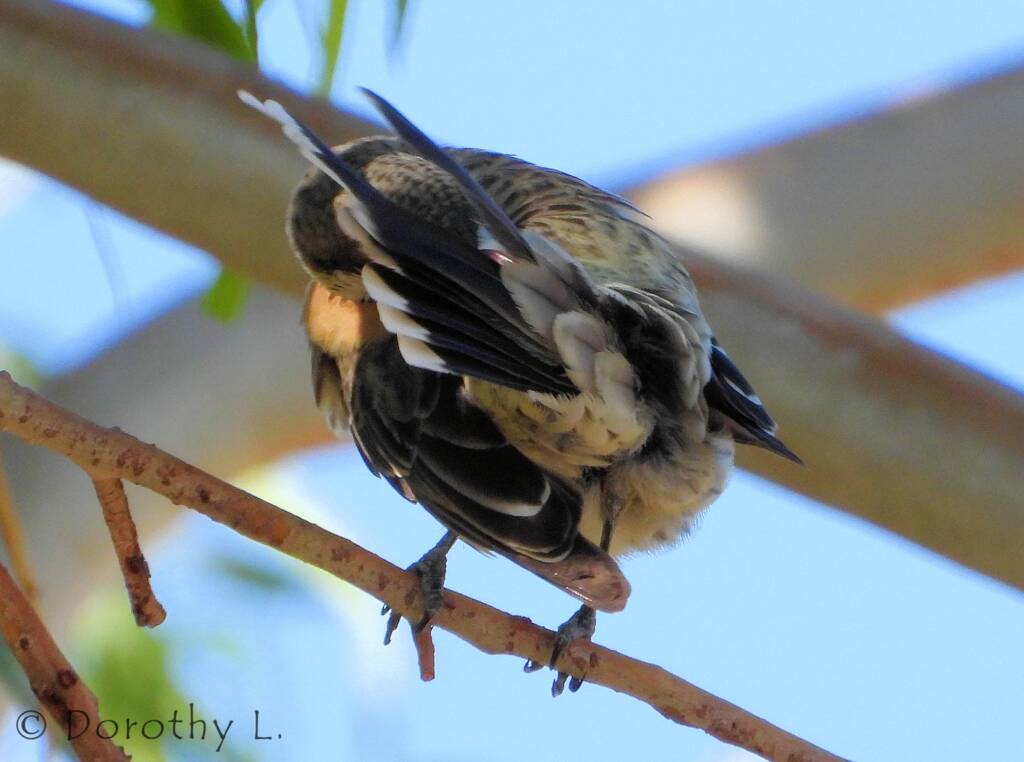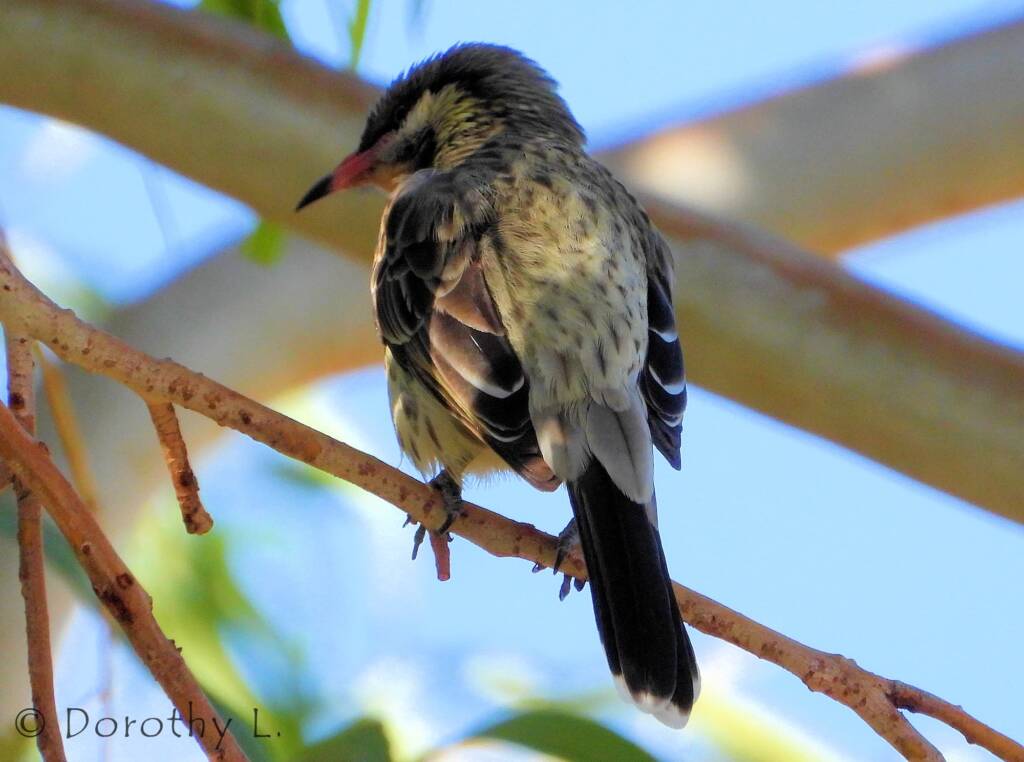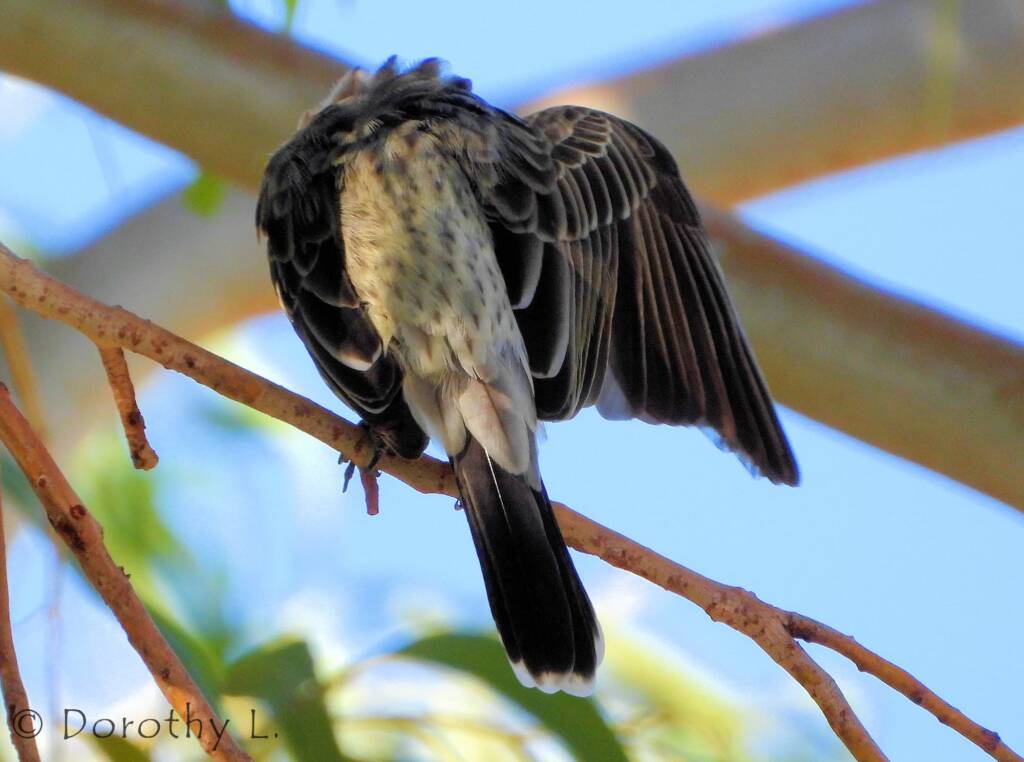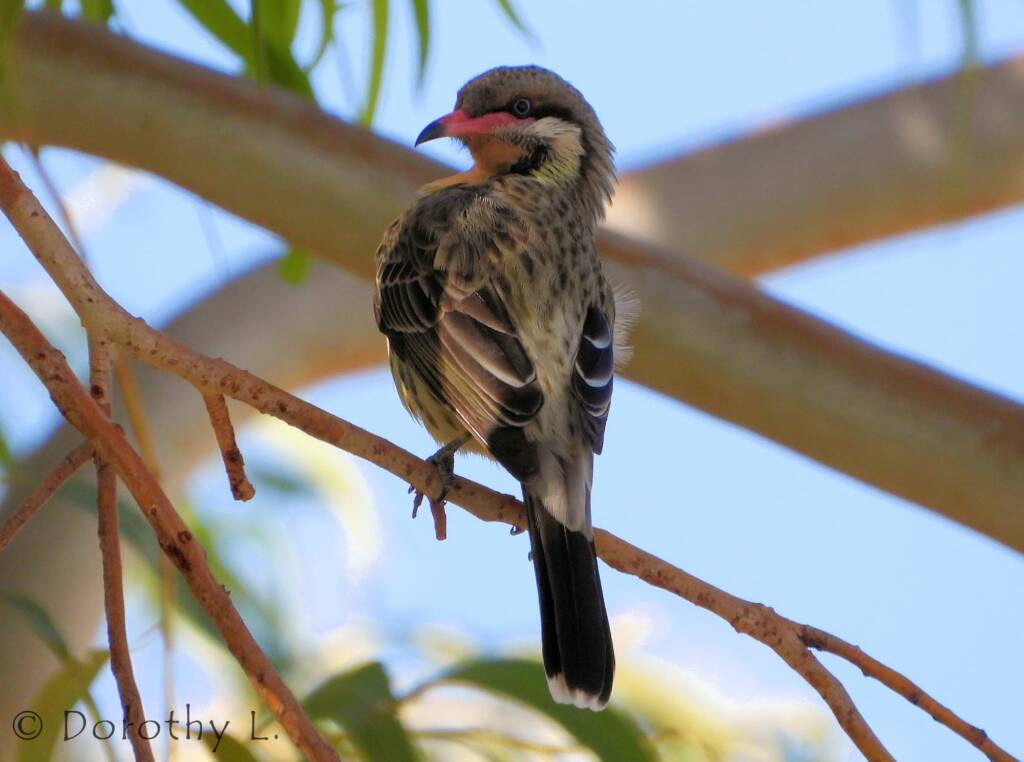Spiny-cheeked HoneyeaterSpiny-cheeked Honeyeater – preening Spiny-cheeked Honeyeater – water
Like all birds, the Spiny-cheeked Honeyeater (Acanthagenys rufogularis) can often be seen preening. This behaviour involves the bird using its beak to position feathers and to reposition interlock feather barbules that have become separated. They can often be seen fluffing out their feathers in the tail and wings, shaking out and cleaning the plumage, keeping ectoparasites in check. This shaking and fluffing out the feathers also aid in locking together the feather barbules that have become unhooked. With their beak, they gather oil from specific glands to preen through their feathers.


- Scientific classification
- Kingdom: Animalia
- Phylum: Chordata
- Class: Aves
- Order: Passeriformes
- Family: Meliphagidae
- Genus: Acanthagenys
- Species: A. rufogularis
- Binomial name: Acanthagenys rufogularis
Footnote & References
- Anatomy: Parts of a Feather, 2 July 2010, Outside My Window, A Blog of Birds & Nature with Kate St. John, https://www.birdsoutsidemywindow.org/2010/07/02/anatomy-parts-of-a-feather/
- Everything You Need To Know About Feathers by Mya Thompson, Bird Academy, https://academy.allaboutbirds.org/feathers-article/
Spiny-cheeked HoneyeaterSpiny-cheeked Honeyeater – preening Spiny-cheeked Honeyeater – water
HoneyeatersBlue-faced Honeyeater Brown Honeyeater Brown-headed Honeyeater Crescent Honeyeater Eastern Spinebill Grey-fronted Honeyeater Grey-headed Honeyeater New Holland Honeyeater Noisy Miner Pied Honeyeater Red Wattlebird Scarlet Honeyeater Singing Honeyeater Spiny-cheeked Honeyeater White-plumed Honeyeater Yellow-throated Miner Yellow-tinted Honeyeater Yellow-tufted Honeyeater




